Journey Around The Globe
ready for the next destination
Cairo – City of Thousand Minarets
CAIRO, EGYPT: I don’t think I need to say much about Cairo or Egypt as a whole. This is one of the earliest civilizations of the world and when you visit this country, you will know that some talented group of people lived here once few thousand years ago. Some of world’s very original art, culture, history, language, and science started from this land. For a traveler, this is a paradise to see, taste, learn, and experience uniqueness. Cairo is Egypt’s biggest city and is also known as the “City of Thousand Minarets” for having hundreds of big and small mosques in every corner. After being in so many places, I must say there are 2 places where I found people to be the friendliest, most helpful, and hospitable. One was in Dublin and another city is Cairo. Egyptian people are always eager to help its guests and very humble. This is a contemporary and thriving city with glorious history from past…a perfect place to feel both of the worlds and eras.
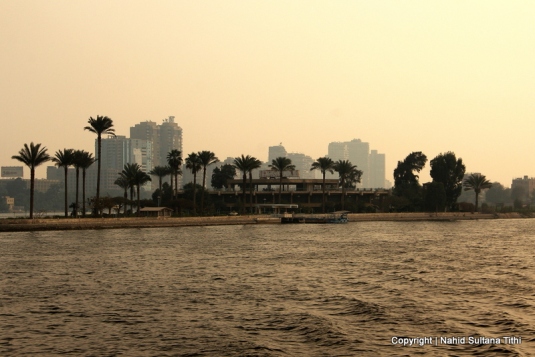
- River Nile and Cairo city…what a great combination
Some FYIs and tips for the travelers before visiting Cairo: Egypt made it really easy for US citizens to travel their country. We can get entry visa in the airport for 15 USD per person. About transportation, always ride white taxis with meters. Black cabs don’t have meters, therefore better to bargain a price before riding. Always carry tissue or napkins with you. Some public bathrooms don’t have tissues, even if they do they will expect some tips for that.

- Streets and traffic jam of Cairo during rush hour, a view from Al-Azhar Park
TIME of TRAVEL: We flew to Cairo from Belgium during the 2012 Christmas break. While it was freezing in Belgium, the weather in Cairo was just perfect. But carrying a sweater won’t be a bad idea when traveling here this time of the year.
OUR HOTEL: We stayed in Cairo Moon Hotel in the heart of Cairo, only 10 minutes’ of walk from Cairo Museum and Tahrir square. Honestly speaking this was a below average hotel with tiny (for only 3 people) and scary elevators, big red ants walking all over the floor, too much noise late at night, and few other problems. But the owner of this hotel, Mohamed, is an exceptionally friendly and helpful gentleman. All the staffs here are same way too which overcomes all the other problems of this hotel. Mohamed organized few trip for us here and there including the trip to Giza. It had free basic breakfast and free Wi-Fi. Pick up from or to airport can be arranged if you let them know ahead of time.
EATING and SHOPPING: Kushari is a famous cheap street-food in Egypt. This usually comes in different sizes. It may sound weird, but this combination of pasta, rice, spaghetti, lentils, white beans, and fried onions is very filling and tasty when you mix it with different types of sauces. We had dinner on 2 nights in a very popular restaurant in the heart of Cairo, called “Gad”. From the daily crowds of it, we could tell that this was going to be a great place to eat some local food. They have burgers and fast food menu as well as some traditional dishes, like Egyptian pancakes, spiced salad (the best), and burger with egg. One of the castle-like restaurants in Al-Azhar Park was a very fancy spot where we were taken to for a dinner by someone we knew. Night view of Ali Pasha Mosque in citadel as we were having dinner was gorgeous. I think this is where we had our best food in Cairo. Also try Egyptian pizza, falafel, and shwarma.
I can give you a whole list of things that you can buy from Cairo. Spices, papyrus, sphinx, pyramids (in different colors and materials), shawls/scarves, traditional clothes are just to name some. Khan-El-Khalili is more of an expensive place for tourists. Most of the tourist attractions have small stores or vendors nearby. When we took our Giza trip, our guide Haisam took us to a big showroom of papyrus, Golden Eagle Papyrus on Sakkara Road. This is a government approved store, and therefore you know you are buying the real thing. It has hundreds of papyrus wall decors to choose from at various price ranges and with different themes. The guy who was showing us around actually took 10 minutes to show us how a piece of papyrus was made from its trees…that was absolutely fascinating and very educational for our little ones. Here is their phone number if you need it – +2037719585.
PLACES WE’VE VISITED: Cairo is overloaded with many touristic places from really ancient wonders to modern and stylish sites. We spent about a week here and was pretty much done seeing most of old part of the city. We could have stayed longer to visit experience more of new areas, its night life, and thriving life of Cairo. Other than the following some other places that tourists can consider visiting (we couldn’t see these places) are Cairo Tower, which can be seen almost from any corner of the city and provides 360-view of Cairo including Giza. Also dropped off your list was Abdeen Palace which was home of the last king of Egypt the exiled King Farouk.
1) KHAN-EL-KHALILI BAZAR: Khan-El-Khalili Bazar is a tourist trap in Cairo for shopping. It’s a like big maze with winding small alleys and many small stores. You will find almost anything here including perfumes, spices, handcrafts, traditional clothes, gold, and many other things. I wouldn’t recommend buying papyrus paper from here as they may not be real Egyptian papyrus. But whatever you buy bargain is a must…not just here, in whole Cairo.
2) NILE RIVER CRUISE: You can’t leave Egypt without experiencing Nile at night and the best way to do is to take a dinner-cruise. Our ship’s name was Lady Diana Nile Cruise Line. This was a unique experience for all of us and the kids loved it the most. Combination of Nile and Cairo looked more than just beautiful at night from the observation deck.
It was a cozy sitting area where we had dinner. Buffet trays were filled with absolutely fantastic food. The show started with karaoke songs during our meal but the real entertainment started after dinner. First it was belly dance, which we saw before…I think I enjoyed the fast Arabic music the most here. The final item was a man doing whirling Sufi performance. Now, that was something we have never seen before and it looked out of this world. The enthusiastic music, Dervish’s costume, his circling…everything about it made that place very mystical.
Our hotel arranged this trip for us. It was 90 USD for all 4 of us. The dinner started at 7:30 pm and by the time we were done with all the performances, it was about 9:30 pm.
3) TAHRIR SQUARE: Also known as Midan Tahrir (meaning Liberation Square) is located in front of Egyptian Museum and was occupied by the demonstrators’ campsites and banners during our visit. This is where Egyptians gathered around during the uprising of the country before impeaching their President Hosni Mubarak. This large public square is a historic place for Cairo and Egypt and their history.
4) EGYPTIAN MUSEUM: Located in busy Tahrir Square, this is one of the greatest museums in the world and a must-see to acquire knowledge on real history of Egypt. Massive collections of ancient Egyptian antiquities can be found outside and inside of the building. I’ve heard that hundreds of items are added each year to this museum as more excavations and discoveries take place. More than 135,000 items of this museum display artifacts of pre-dynasty, Old-Kingdom, Middle-Kingdom, late periods, and from Greek and Roman periods.
Some of the highlights of this place are the 2 Royal Mummy rooms, pet/animal mummies, early jewelries, hundreds of beautifully carved coffins, stone-carved statues, hieroglyphics granites, and early manuscripts from different dynasties of Pharaonic periods from as early as 3200 BC. Finally many objects/treasures from Tomb of Tutankhamen, including his famous original mask is at display here. Royal Mummy room has mummies of ancient Egyptian kings, queens, and high priests. Seeing mummy of Pharaoh Ramses II really gave me goose bumps. Evidently, he is the Pharaoh who chased Moses (Prophet Musa AS) across Red Sea and drowned with his army in the ocean. His mummy is the best preserved mummy there… when you look at his teeth and hair, those don’t look like few thousand years old. The museum is a bit un-organized and many of its objects lack labels or information board. Some collections looked like they were just stacked without care. But the good news is that, the location of this museum is supposed to move somewhere in Giza which will have more space to accommodate these object of bygone days.
Ticket to enter the museum is 60 LE for adults and 30 LE for children. There is a separate fee to enter the section of Royal Mummies which you can purchase from the upper level. It’s 100 LE for adults and 60 for the kids. No camera or backpack is allowed inside the museum. We had to keep them in a locker near the ticket office. The museum has 2 levels and visiting it took us about 2 ½ hours.
5) AL-AZHAR PARK: This is the best landscaped garden and park in Cairo for strolling and enjoying magnificent view of the city. It is known to the locals as the “lung of Cairo”. We went there right before sunset and saw the whole city lighting up as it was getting dark very slowly. Standing in Al-Azhar Park, you will realize why Cairo is known as “City of Thousand Minarets” … you can see many old and new minarets of mosques from here, creating a unique skyline. An uncle, my ex-colleague’s father, took us here and treated all of us to dinner in a restaurant inside the park name “The Citadel”. We had our best traditional Egyptian meal here while looking at lit-up Ali Pasha Mosque on the distance. The park looked ever nicer at night. 5 LE is the entry fee. It is very well maintained and absolutely safe. Park closes around 10pm and no one is allowed in afterwards.
6) CITADEL and ALI PASHA MOSQUE: Locals know this place as Salahdin’s Citadel because it was built by the mighty Salahdin (Muslim caliph who defeated the Crusaders) in 1183 AD.
There are few old mosques and museums (like Police National Museum, Prison Museum, Al-Gawhara Palace Museum) inside the citadel. You can spend whole day roaming around and visiting them leisurely. The best part of being here is the view you get over Cairo. On a clear day, you can see as far as the Pyramids of Giza. Panoramic view of Sultan Hasan Mosque and Rifaii Mosque side by side looks great along with the other parts of Islamic Cairo.
Ali Pasha Mosque, also known as Mohamed Ali Mosque, is an iconic structure of Egypt that can be spotted from almost anywhere in Cairo day or night. The mosque was built inside the Citadel in the mid-19th century. This old and grand mosque was established by Mohamed Ali Pasha, who is considered to be the founder of modern Egypt, and took about 18 years to build. From outside, the mosque looks more like the Blue Mosque of Istanbul. Courtyard is enormously spacious and beautiful. This big mosque is very beautiful inside with nice dome, vaulted ceiling, big chandelier, and old patterns on wall. Tomb of Mohamed Ali Pasha is also located inside the mosque. One thing that made me sad about this mosque was that it lacked maintenance outside and inside. A structure this massive and historical is country’s pride and deserves love and attention which was missing from this place.
The citadel is located in Islamic Cairo. Entry fee to the citadel is 50 LE for adults and 25 LE for the kids and is open from 8 -5 pm. We didn’t go to any museums or mosques, other than Ali Pasha Mosque, that’s why we were done in few hours.
7) HISTORIC MOSQUES of CAIRO: Most of the mosques are located in Islamic Cairo and they are very old, dusty, and lack in maintenance. You will see many homeless and beggars lurking around these places. Please try to maintain right etiquettes of visiting these sacred places during your trip, it shows the local that you respect their culture and belief.
a) SAYYIDINA AL-HUSSEIN MOSQUE: The mosque is located in Midan Hussein and very close to Khan-El-Khalil souk. The original mosque was built-in the early 12th century. This is a very sacred site for Muslims all over the world since head of Ibn Al-Hussein, grandson of Prophet Muhammad (S.A.W), was buried here. The decorative rawdah or tomb can be viewed from both men and women side. It’s free to enter (have to pay 1 LE to store your shoes) but unfortunately, this in not accessible to non-Muslims.
b) AL-AZHAR MOSQUE: This is another historic site in Midan Hussein. Founded in 970 A.D., Al-Azhar Mosque is one of Cairo’s oldest mosques and nearby Al-Azhar University which is the world’s OLDEST OPERATING UNIVERSITY. Its big and open inner courtyard is very peaceful where you can spend some time appreciating its age and beauty. Inside the mosque is simple but very big. It’s free to enter but have to pay 1 LE to store your shoes in the entrance. Non-Muslims can access this mosque but not during prayer times.
c) IBN-TULUN MOSQUE: Built in 879, this mosque is from early Islamic era. The minaret of Ibn-Tulun Mosque is said to be the oldest minaret in Egypt. The inner courtyard and the interior are huge, but lack care. It was free to enter and took us about 15-20 minutes to walk around the perimeter. The mosque is still active, therefore, they don’t allow any visitors during prayer times.
d) SULTANA HASAN MOSQUE: Located in Midan Salah ad-Din (Saladin Square) and lying at the foothill of the hill, this is a really old mosque from 1356 and is a great example of Mamluk dynasty. This is one of the biggest mosques in Egypt. This is actually a both mosque and madrassa (Islamic school) with very early Islamic architectural design. You can still see some of the original old mosaic floors here and there. The courtyard is notable for its elaborate marble flooring, a trademark of Mamluk art. It was under major renovation during our visit, therefore couldn’t visit some of the sections. Entry free to this mosque and Rifaii Mosque is 40 LE for adults and 20 LE for kids.
e)RIFAII MOSQUE: This mosque is located right opposite of Sultan Hasan Mosque and the same ticket covers both the mosques. This is probably the last large-scale mosque to be built-in pre-Republican Egypt. Several leading architects of that time took part in designing it. Replacing a smaller mosque, this early 20th century mosque is the final resting place of the last Shah of Iran (Mohammad Reza Shah Pahlavi). Many members of the Egyptian royal family were eventually buried in the mosque. Ironically, Egypt’s King Farouk, who was overthrown in 1952 and died in exile, has his tomb inside the mosque too. Both exterior and the interior of the building are elaborately decorated. High ceilings and big old chandelier are some of the highlights of this place.
f) AMR IBN AL-AS MOSQUE: Built in 642, this is Cairo’s first mosque and is still an active place for the worshippers. The mosque looked very simple, dull, and not very nurtured by the authority. The mosque is free to enter for everyone, except during prayer times. Men and women have separate entrances.
The ladies have to wear a cloak and everyone must take off their shoes upon entering any of mosques.
8) COPTIC CAIRO & ITS CHURCHES: This is part of Old Cairo and has been home of Cairo’s Christian community for centuries. You can actually walk from Amr Ibn Al-As Mosque to the boundary of Coptic Cairo. Old walls and the winding alleys of Coptic Cairo are amazing. Many old churches and monasteries still stand bold and beautiful here. One of the biggest and oldest churches (from the 7th century) of this community is The Hanging Church. It was under major renovation that time, so we couldn’t get an inside view.
Then we followed an old road of this neighborhood and stopped at in front of another underground ancient church, called Church of St. Sergius. Built in the 4th century, this church has been destroyed and renovated many times over and over again. This old style church is very small but beautiful inside. When we entered there was some kind of recitation going on inside the church and I must say it was a bit surprising listening to these recitation in Arabic, it sounded like I am in a mosque…lolz. Another interesting fact about the Christians here is that they celebrate Christmas on January 7th of each year and not on 25th of December.
9) PHARAONIC VILLAGE: This theme park was built by Dr. Ragab to teach the children of Egypt and the whole world about the 5000 year’s history of this country. This is a living museum and one of the best place for kids as well as adults to get a visual feeling of Egypt’s glorious past. There are four different packages that you can choose to fulfill visitor’s interests. Here they are:
***Village tour + 4 Museums = 95 LE
***Village tour + 8 Museums = 115 LE
***Village tour + 4 Museums + Nefertari Yacht Ride = 145 LE
***Village tour + 4 Museums + Nefertari Yacht Ride + Meal = 195 LE
We took 3rd package but for the lack of their organization and time management, we couldn’t visit all four museums. It’s better to come here in the morning and stay until they close. The “Village Tour” is done by a small engine boat that takes you to the “Mythological Canal” and gives you a ride thru the canal for 30 minutes. This was probably the best part for all of us. You actually see real people enacting ancient scenes of agriculture (like fishing, farming, and etc.) and ancient industries (like papyrus, cotton, wine, pottery, mummification, and a lot more). As the little boat passes by each station you feel like you are living in that era of ancient time.
After our boat stopped at the last stop, we met up with a young man who guided us thru the exact replica of Karnak Temple of Luxor. Even though not the real one, this architecture and its decoration are almost look-alike of the real temple. Leaving the temple behind, he showed us around the example of how rich men and peasants used to live thousands of years ago…model of their houses, real people acting out how fire was made, how rich man’s wife would live a lavish life, and how a poor man’s wife would have to work hard all day at home.
After a 10 minutes break, we headed towards “The Tomb of Tutankhamun”. This is another depiction of the actual tomb of Egypt’s most famous Pharaoh, King Tutankhamun found in Valley of the Kings in Luxor. You can visualize the exact way the tomb was discovered by Howard Carter in 1922. The tomb was filled with many treasures, furniture, couple layers of casket layers, mummified body of King Tutankhamun, and finally his musk, an iconic symbol of ancient Egypt. Our last attraction was Nefertari Yacht tour. The yacht took us to River Nile and gave us a chance to get a daytime view of the river for 45 minutes.
The park has few important museums, like Pyramid’s Museum, Cleopatra’s Museum, The Tomb of Tutankhamun, Mummification Museum, Boats Museum, Modern History Museum, Museum of Islamic History and Art, and couple other museums. Each of these museum doesn’t take more than 15-20 minutes but they are very informative. There are also few unique souvenir stores, cafes, and a photo studio.
Related articles
- Things to do in Cairo, Egypt (growingupbryce.wordpress.com)
- Cairo,Egypt : Several journalists attacked by Muslim Brotherhood members (cpnagasaki.wordpress.com)
- Al-Azhar Mosque (mightyturk.wordpress.com)
- Cairo,Luxor and Aswan 7 Days 6 Nights Tour (egypttraveltours.wordpress.com)

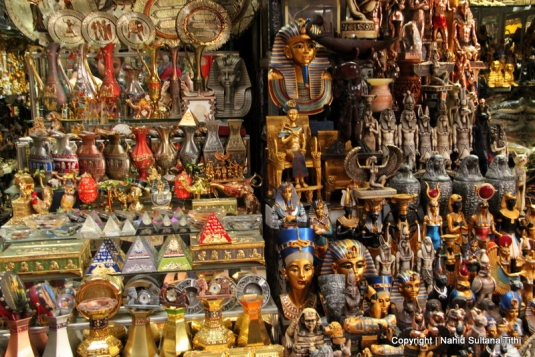
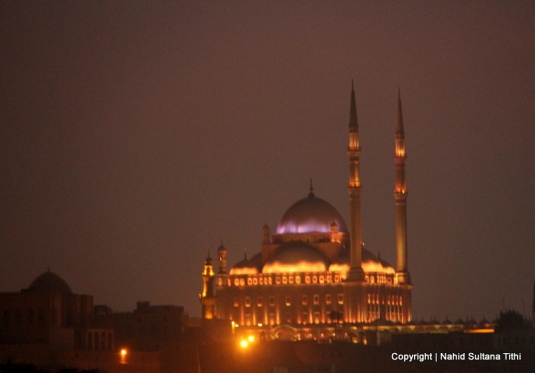

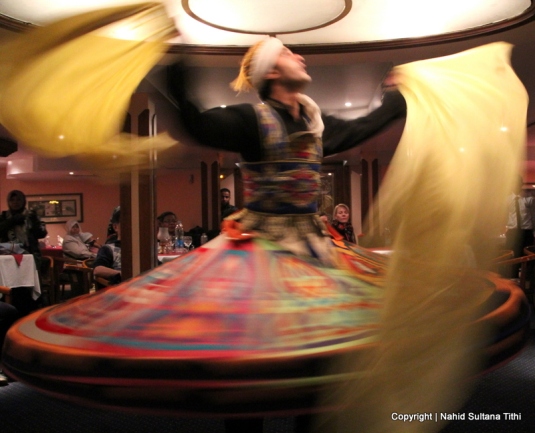

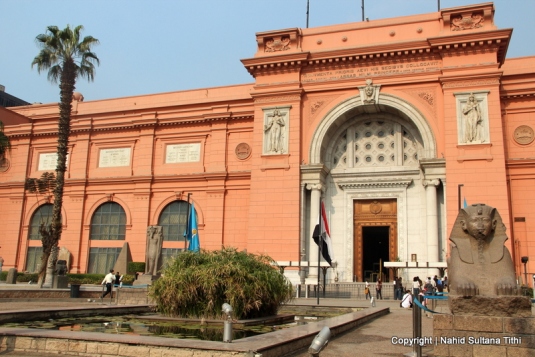
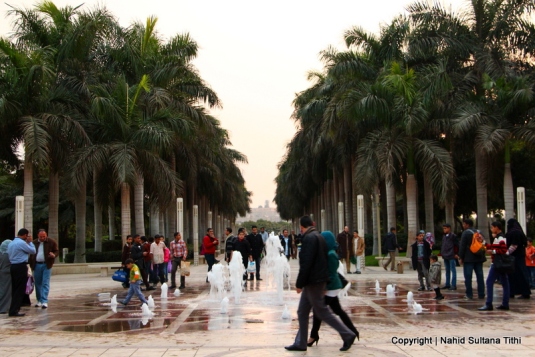
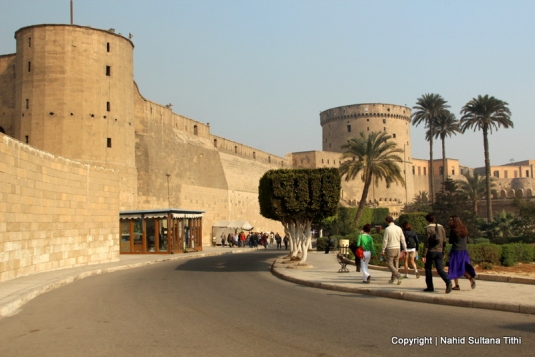
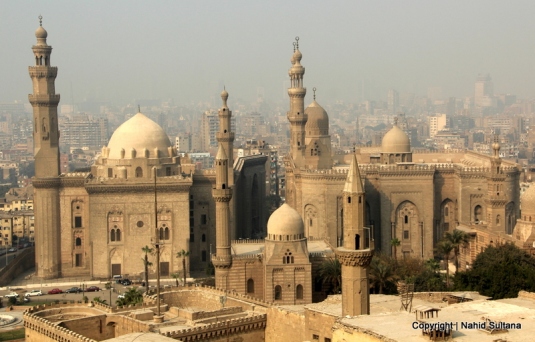
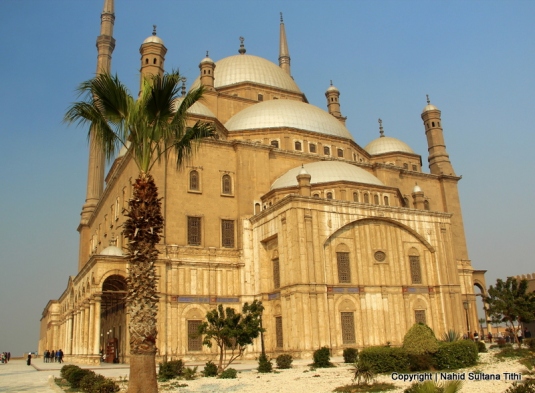
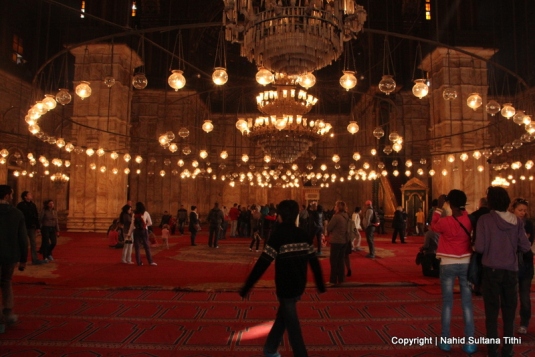
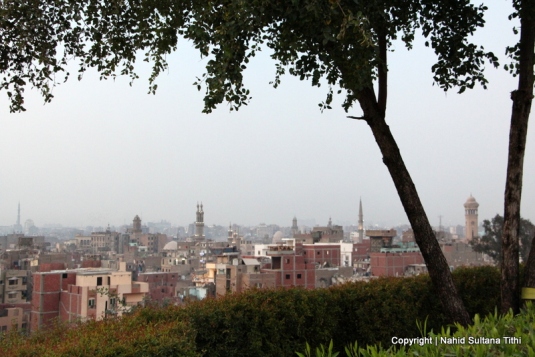
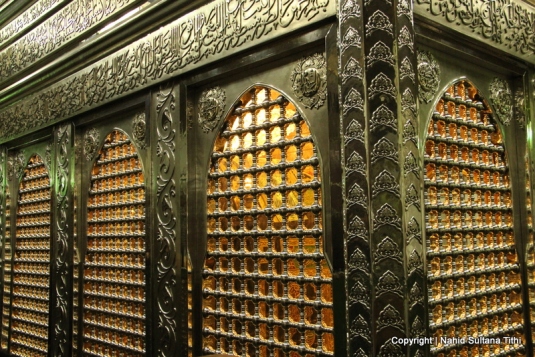
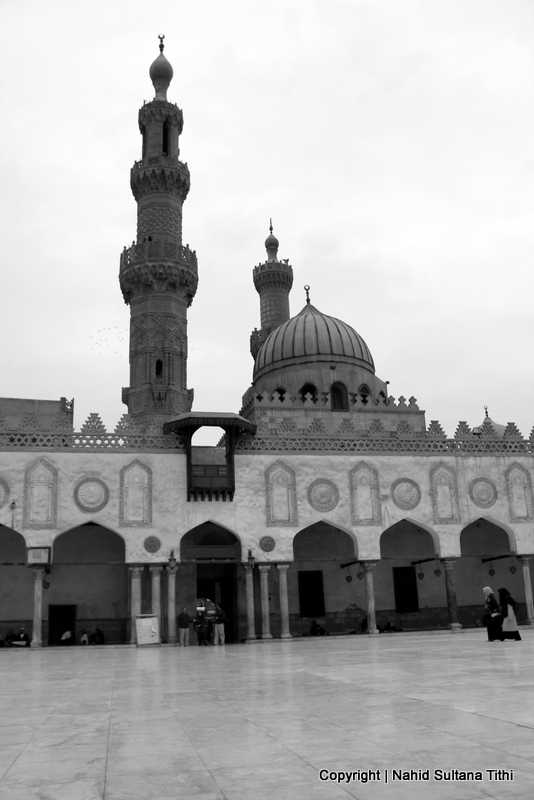
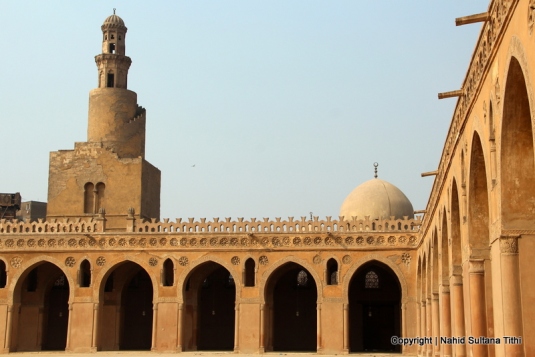
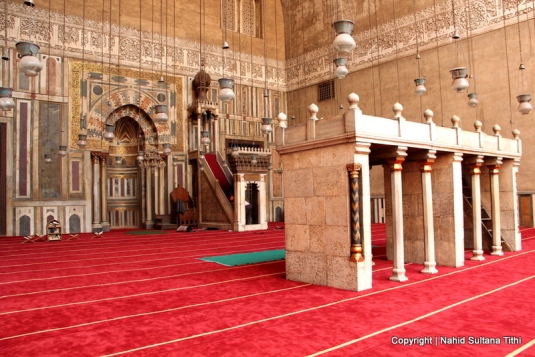
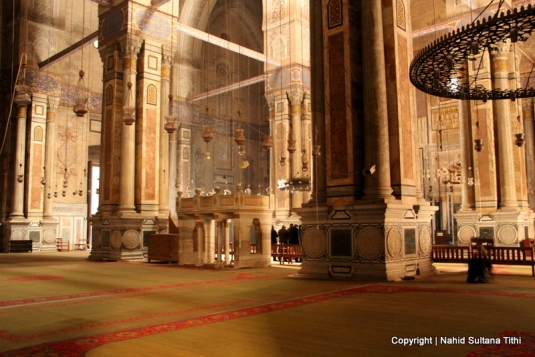
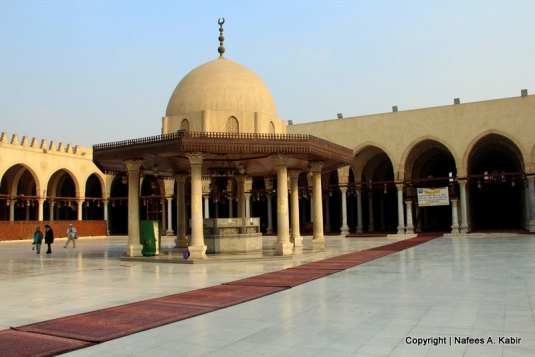
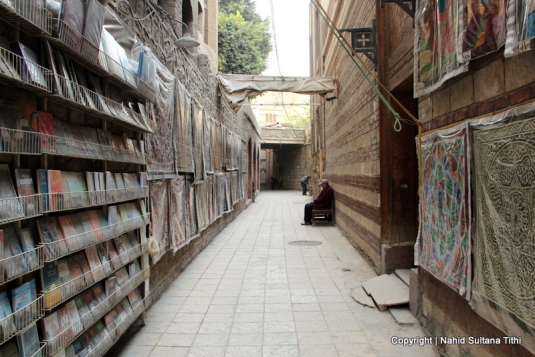
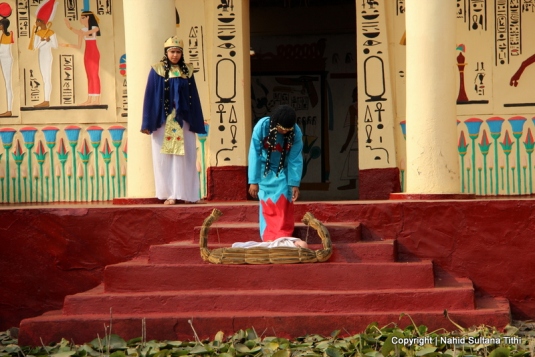
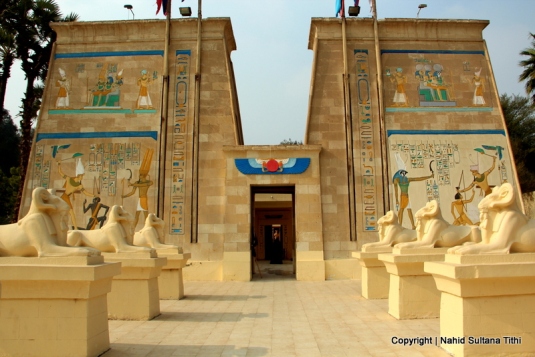
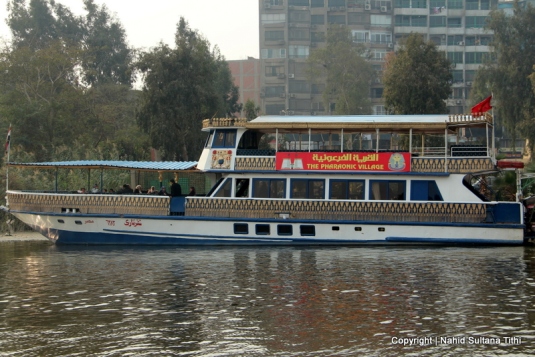




Cairo! dream land with mosque, minararets and historical places. thanks for the imformatiom.
LikeLiked by 1 person
You are welcome…thanks for stopping by…cheeers
LikeLike
Wonderful coverage of Cairo 🙂 good job
LikeLike
Thanks a lot for your visit Ahmed…cheers
LikeLike
Gahhh :p my behind has been itching to get the heck out of this little country… you’re not helping… Those are some stomach-butterfly pics. 🙂
LikeLike
Lolz, thanks for your visit…cheers
LikeLike
Thanks for reminding me of the wonders of Cairo.
LikeLike
Glad you liked it Stephen and thanks for stopping by.
LikeLike
The ride down the Nile sounded like quite the trip, and a great way to see the city. When I think of Egypt, the Nile and pyramids are the first things that come to mind. Enjoyed the visit!
LikeLike
Yes, we took ride on Nile both during day and night time…looks beautiful anytime of the day. Glad you liked it…have a great weekend Bev
LikeLike